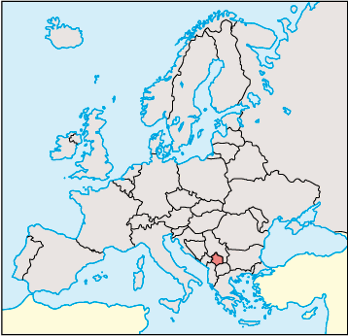What is the Capital of Kosovo? Pristina

Pristina is the capital of Kosovo and the country’s political, administrative and cultural center. The city has 204 725 residents (2016). With suburbs, the population is about 550,000.
Ethnic composition
97.8 percent of Pristina’s residents are Albanians. The largest minority group is Turks with one percent of the population. Prior to the conflict in Kosovo in the latter part of the 1990s, the city had a Serbian population of about 40,000. Now Serbs make up 0.22 percent of the city’s population.
Economics and transport
The service industries, including tourism, are of great importance to the city’s economy. The business sector also includes the textile and food industry. Pristina is the country’s most important traffic hub. It is highway and train connection to Albania and Northern Macedonia. Pristina International Airport is 15 kilometers south of the capital.
Culture and knowledge
The Kosovo Museum, which opened in 2004, is housed in a building dating from 1889. The museum has sections for archeology, ethnography, natural science and history. The city has its own museums for ethnology and ethnography. The National Gallery, established in 1979, has the largest art collection in Kosovo. The Imperial Mosque dates from 1461. Pristina University was established in 1969 and has 6,000 students.
History
Pristina was first mentioned in 1342. The city was part of the Ottoman Empire from 1389 to 1912, when Serbia took control of the city. Pristina was incorporated in Albania in 1941-1944. After World War II, Pristina was part of Yugoslavia until the dissolution of the federation in 1992, when the city became part of Serbia and Montenegro. On February 17, 2008, Kosovo declared its independence.
The city suffered some damage when it was bombed by NATO in 1999 (see Kosovo’s Contemporary History, War and NATO Intervention).
By Resolution 1244 (1999), the Security Council established the United Nations Interim Administration Mission in Kosovo (United Nations Interim Administration Mission in Kosovo – UNMIK). UNMIK is headquartered in Pristina and field offices in Peć and Mitrovica. According to Resolution 1244 (1999), UNMIK’s purpose is “to ensure a peaceful and normal life for all Kosovo citizens and to promote stability in the Western Balkans”.














































